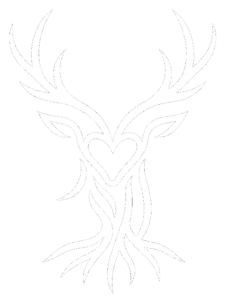How Spending Time in Nature Regulates the Nervous System
Published By: Walk With HartThere’s a reason so many people instinctively turn to nature when life feels overwhelming. A walk under trees, the rhythm of water, the hush of wind through tall grass — these aren’t just pleasant distractions. They are regulating forces that interact directly with the nervous system.
Modern life pulls attention outward at a relentless pace. The nervous system, especially in those with trauma or chronic stress, often hovers in a state of hyperarousal or shutdown — fight, flight, or freeze. Nature, in its slow and spacious rhythm, offers a different pattern. One the body recognizes. One it trusts.
The Nervous System: A Brief Somatic Overview
The human nervous system is constantly scanning for cues of safety or danger — a process called neuroception. This happens beneath conscious awareness. It’s the reason why loud noise can spike the heart rate, or why a soft gaze can bring a sense of ease.
At its core, nervous system regulation is about coherence: moving out of survival states and back into connection, presence, and flow.
When in regulation, a person feels:
-
Clear-headed and calm
-
Present in the body
-
Emotionally responsive without overwhelm
-
Able to rest, digest, and engage
Nature — especially when engaged with intention — supports this return.
How Nature Regulates the Nervous System
Nature doesn’t ask the body to perform or fix. It simply invites the system to remember. The following are ways this unfolds somatically:
1. Rhythm and Pattern
Waves, wind, birdcalls, and rustling leaves all offer repeating, non-threatening patterns. The brainstem — which governs basic regulation — responds to rhythm more than meaning. These natural cadences help re-pattern dysregulated systems.
2. Reduced Sensory Load
Urban environments bombard the senses. Artificial light, screens, sirens, social dynamics — each contributes to overstimulation. Nature softens the input. Diffused light, wide landscapes, and organic sounds give the system space to exhale.
3. Visual Field Expansion
In natural spaces, the eyes soften. Peripheral vision returns. This engages the parasympathetic nervous system — particularly the “social engagement” branch that governs calm and connection. Looking at distant trees or the horizon gently signals, You are safe.
4. Somatic Grounding
Physical contact with earth, water, or stone provides tactile orientation. The feet on uneven trail, the hand on bark, the sit on cool moss — all are micro-anchors that pull attention from looping thought into direct sensation. Grounding in the most literal sense.
5. Sense of Belonging
Something ancient stirs when surrounded by trees or standing beneath open sky. For many, there is a felt sense of not being alone — of being part of a larger ecosystem. This relational resonance, even if subtle, can interrupt isolation and reawaken inner connection.
Nature as a Co-Regulator
Just as a regulated person can soothe another through presence and attunement, nature can co-regulate. It offers consistent signals of non-threat. It moves slowly. It doesn’t expect anything. For the nervous system, this kind of presence is both rare and healing.
Therapeutic approaches like Somatic Experiencing and Polyvagal Theory increasingly recognize the role of relational field in healing — and nature, when entered with reverence, is one of the most powerful relational fields available.
The Difference Between “Being Outside” and Being With Nature
Merely walking through a park while distracted may not offer the same regulatory benefits as conscious presence in nature.
Supportive practices include:
-
Walking without headphones or destination
-
Breathing with awareness of movement in the body
-
Sitting in stillness and noticing sound layers
-
Placing attention on the contact between body and ground
-
Orienting visually — slowly naming what is seen, smelled, heard
When approached as a living relationship rather than a backdrop, nature becomes a co-facilitator in healing.
Nature and Integration Work
In the context of psychedelic integration, trauma recovery, or spiritual realignment, nature acts as more than a calming presence. It becomes a mirror — quiet enough to reflect what the psyche and body are trying to process.
Walk With Hart offers Reconnection Walks for this very reason. These are not hikes. They are curated, slow, somatically-informed walks designed to:
-
Support nervous system regulation
-
Deepen post-journey integration
-
Awaken a sense of meaning beyond language
-
Build internal resilience through external relationship
The terrain teaches. The breath slows. And insight, often unforced, begins to emerge again.
Final Thought: Nature Doesn’t Heal You - It Reminds You
There is no hierarchy in the healing. Nature does not fix what’s broken. It simply makes room for the body to remember what it already knows: how to listen, how to soften, how to return.
This is not magic. It’s ancient. And it’s available — not only in forests and mountaintops, but in any moment the nervous system is given permission to breathe again.
